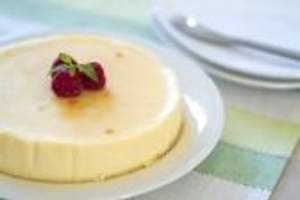I can’t tell you how many times I’ve heard that it is very difficult to make a great cheesecake. I won’t try to tell you that my cheesecakes are always flawless. I have, however, discovered how to make a great cheesecake consistently.
Before you start your cheesecake, you need to select a recipe and assemble the ingredients. This may seem like a very obvious, basic step. It is also a very important step. Once you have selected your recipe, following the tips and techniques in this article will help ensure that your cheesecake comes out great.
Just like anything else you make, cheesecake requires a good recipe. Whether you choose a simple or an elaborate recipe depends only on your preference. If you have not had a lot of luck with cheesecakes in the past, or if this is your first attempt, it is a good idea to begin with an easy, basic cheesecake.
Basic cheesecakes taste great plain or with toppings such as fresh berries. Learning to make a great cheesecake with a basic recipe saves you the aggravation of spending lots of time (or money) on a more impressive cheesecake that doesn’t work out. Once you have learned the techniques to making a great cheesecake, you can move on to fancier, more special varieties.
As with any recipe, your first step should be to sit down and read it over. Make sure you understand all of the terms used in the instructions. Check that you have all of the ingredients on hand – you know how frustrating it can be to have to run to the store when you’re almost done. Finally, be sure that you have the time you will need to complete the recipe. Cheesecakes do take a long time to make, though most of it is baking/cooling, not hands on time.
Once you have selected your recipe and assembled your ingredients, you are ready to make a great cheesecake – no special skills required. The first helpful trick is to fully thaw all of the ingredients and beat the eggs before adding.
The consistency of your cheesecake is dependant upon fully mixing the ingredients. To have a great texture and finish for your cheesecake, you can’t over mix. The best way to strike this balance is to start with soft ingredients and pre-beaten eggs. This allows you to mix everything well without over-beating.
The next trick is the way that you bake your cheesecake. Before you put the cheesecake in the oven, fill a glass or metal baking pan half to three quarters full of water. Place this pan on the rack at the very bottom of the oven. It will create a steam-bath environment which will help ensure a great cheesecake.
Allow the oven to cool completely after baking the crust. Cheesecake bakes best at a low, consistent temperature. Try baking at 225 to 250 degrees. Do not open the oven any more than is necessary, to keep the temperature even.
Use the oven light to keep a close eye on your cheesecake once it is close to done (beginning to “rise” up and look fuller). Your goal is to turn off the oven before the cheesecake begins to brown or crack.
Cheesecakes are very sensitive. Besides liking to take their time, cheesecakes like consistency and don’t like to be shocked. Allow your cheesecake to “rest” in the oven with the door slightly cracked. This will let the cheesecake’s temperature lower more evenly then if you remove it from the oven immediately.
After allowing your cheesecake to cool in the oven for 15 or 20 minutes, remove it to the counter. This is a very good time to run a knife around the outside edges to separate the cheesecake from the pan. Also, if your cheesecake did begin to crack, small cracks can be repaired at this stage. Dip your finger in lukewarm water and use it to smooth over the crack.
Your cheesecake should be left on the counter to cool until it reaches (or at least is very close to) room temperature. The point of all of these stages of cooling is simply to allow the cheesecake to cool gradually, which leads to a better finish.
Cheesecakes will also take a lot of time. Fortunately, the hands on time is minimal. Once you learn the techniques, you can look forward to consistently great cheesecakes!
